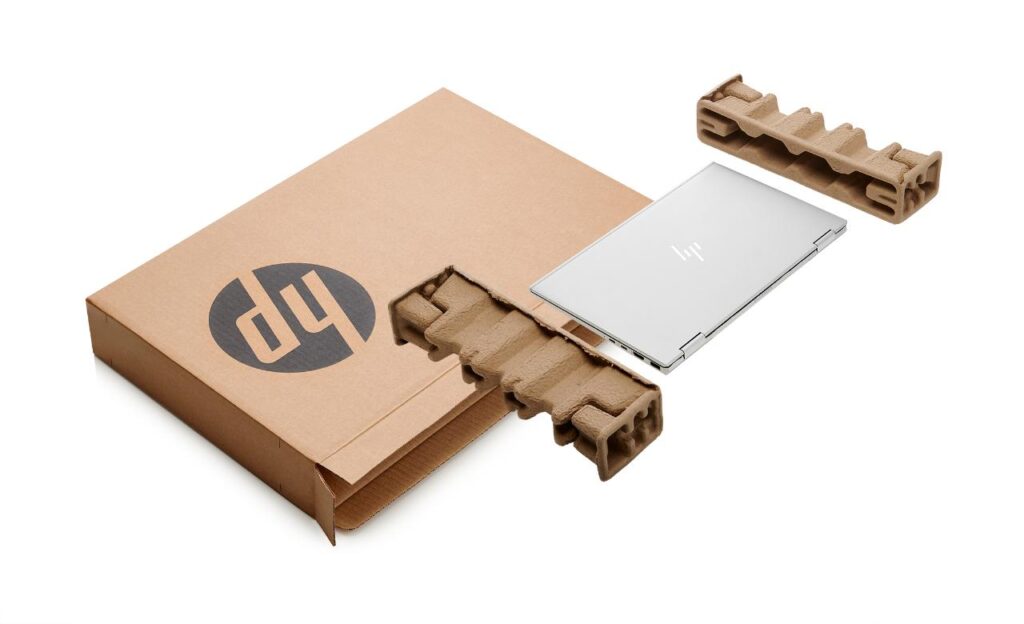We’re wrapping up what I affectionately refer to as corporate social responsibility report season, during which I am deluged on an almost daily basis with lengthy digital documents packed with updates about corporate sustainability initiatives.
I almost never write about these things, despite all the well-meaning pitches requesting this. Sorry PR world.
However, I do poke around looking for information about unique commitments, notable signs of progress and — maybe even more important — hiccups that could help other well-meaning companies avoid similar mistakes.
This particular post focuses on the unique, a new commitment by technology company HP Inc. to eliminate 75 percent of its single-use packaging by 2025.
While pretty much every consumer-facing company has some sort of packaging goal, I can’t recall many (if any) others that call out single-use plastic so specifically. The commitment is focused on the boxes and such used to transport and deliver hardware such as personal computers, laptops, and monitors. (You’ll notice printers aren’t mentioned; I didn’t forget them, but more in a moment.)
Ellen Jackowski, chief sustainability and social impact officer at HP (congrats on the recent promotion!), said one of the biggest areas of focus when it comes to pulling this off will be on swapping out the expanded polystyrene (EPS) foam chunks that cushion things inside boxes. This stuff is incredibly difficult to recycle. Instead, HP will use those made out of recycled, molded pulp.
HP has already stopped using plastic ties to corral power cords and the plastic bag that’s typically been used for product manuals or documentation. The latter are now placed in a paper-based alternative.
“Each packaging goal owns this goal,” Jackowski told me. “It’s going to take everyone. It’s a supply chain that’s very complex.”
The weight of HP’s printers will make recreating their packaging tougher than for other products, she said, noting, “That is where we will need the most innovation.”
One example of where it has made changes is in the box for the HP Tango Terra home printer, which comes in a recycled box that is completely “plastic free.” Molded fiber cushions and glassine paper (like those envelopes the Post Office gives you when you buy stamps) were used as replacements.
If you want to look at HP’s 131-page 2019 Sustainable Impact Report, here’s a link to the PDF. The one other high-level thought I’ll leave you with is this one: A few years ago, HP started tracking the amount of its annual revenue in which some sort of sustainability feature is part of the purchasing decisions. When I first wrote about this in 2018, that number was $700 million for the 2017 fiscal year. For 2019, those factors resulted in more than $1.6 billion in sales, the company reports.

